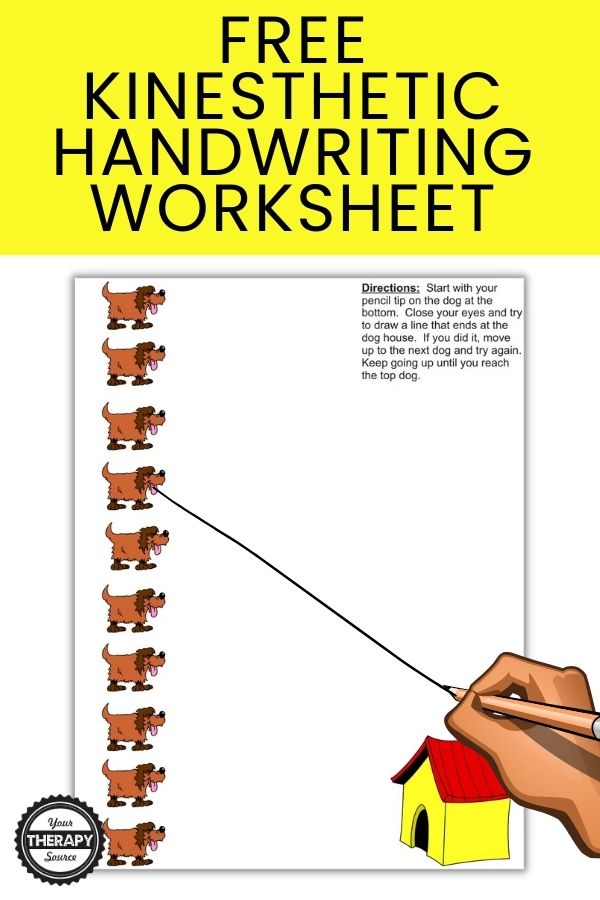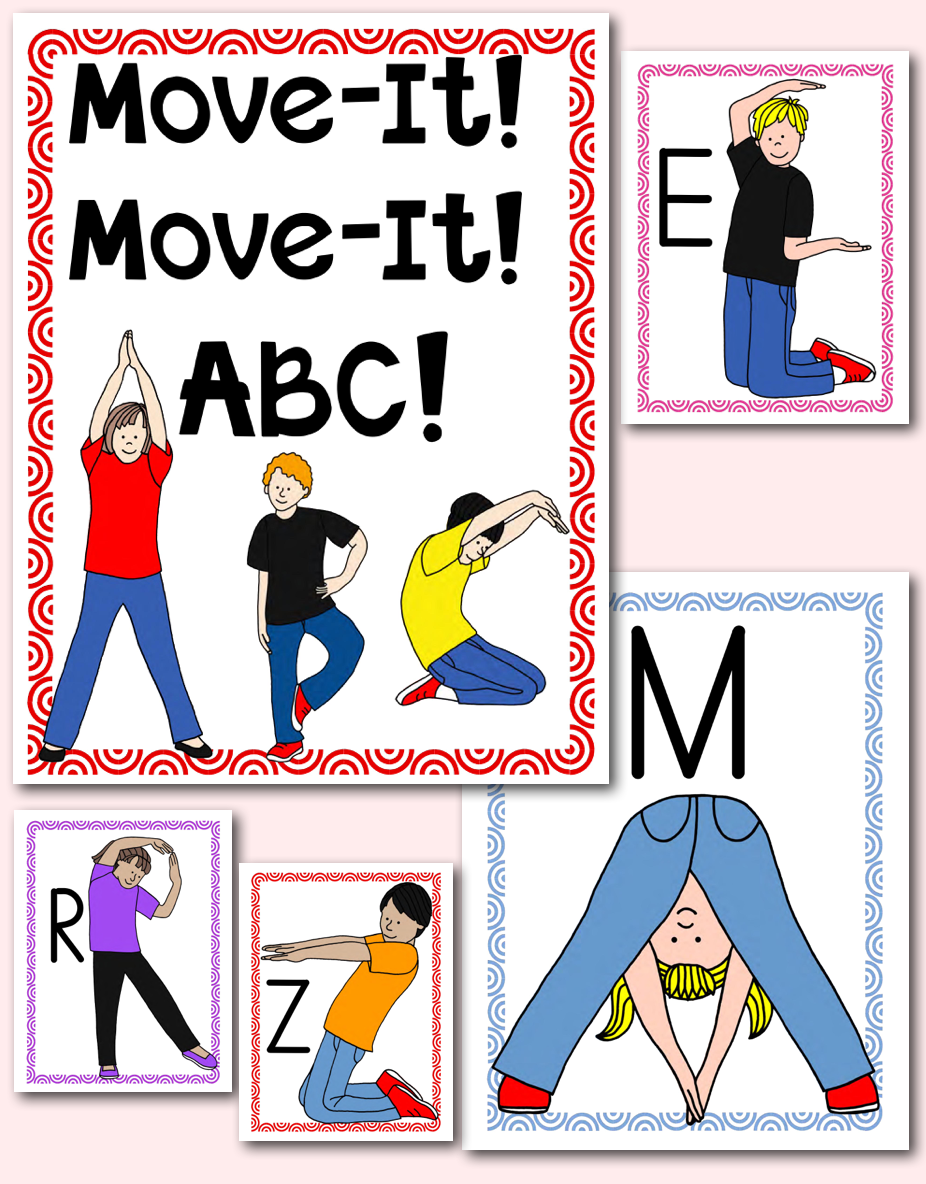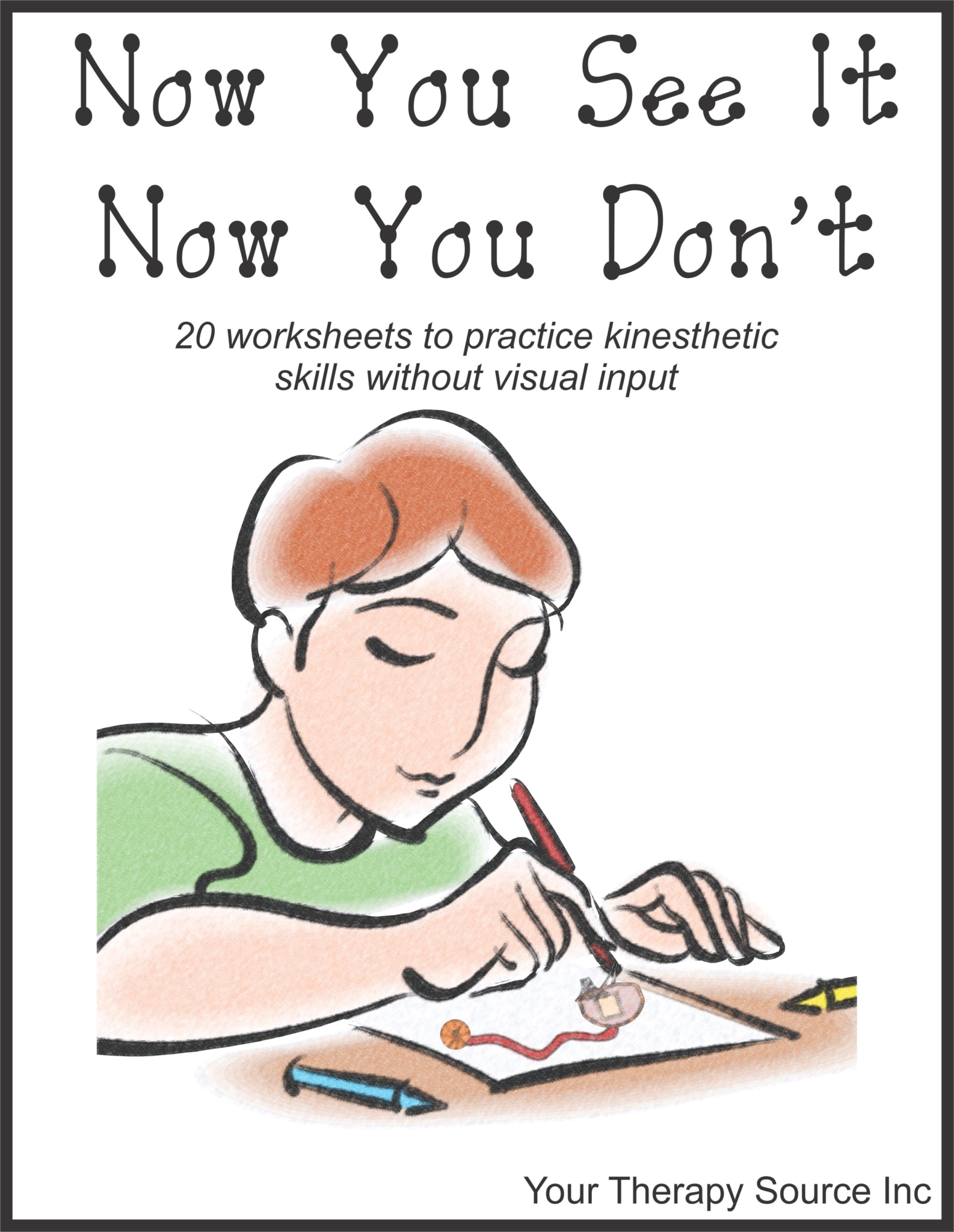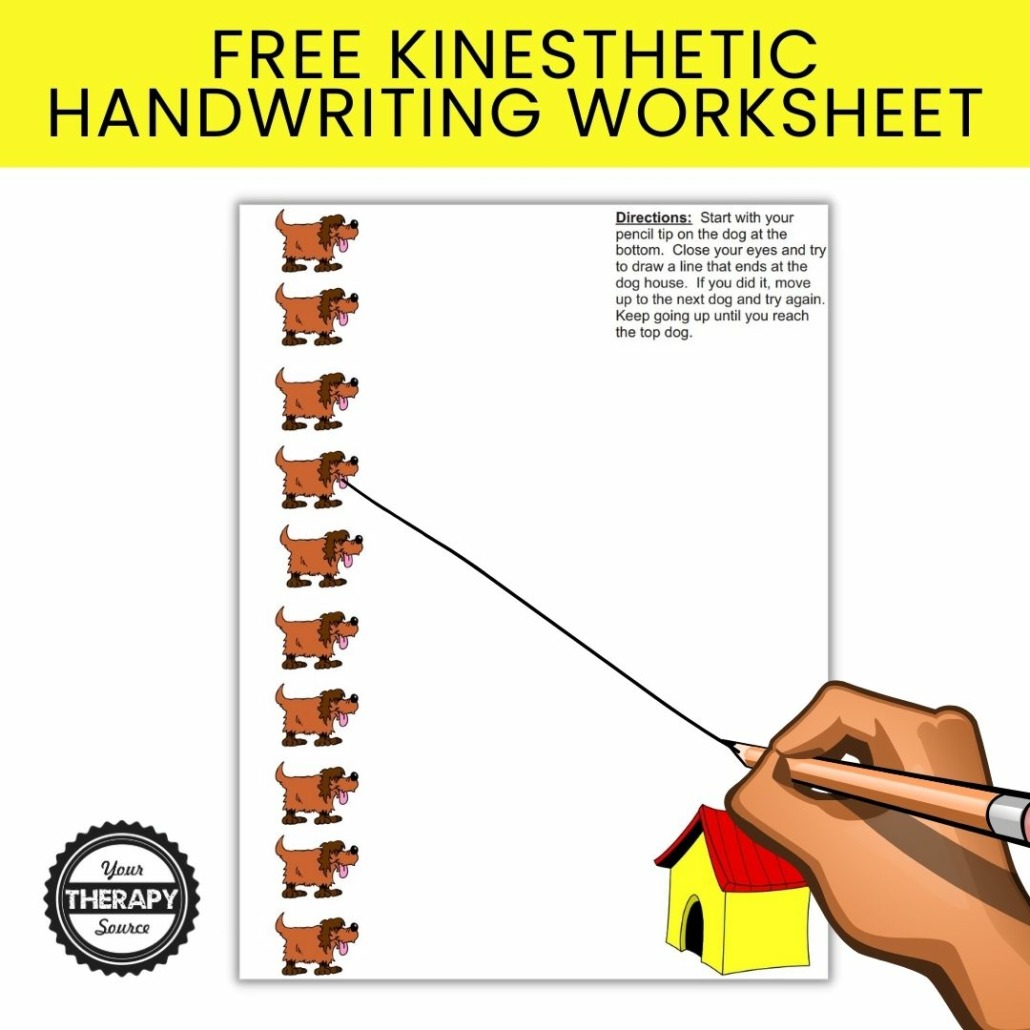FREE Kinesthetic Awareness Practice Worksheet

Handwriting is an important skill for everyone to develop, but it can be especially tricky for those with kinesthetic awareness difficulties. Luckily, there are some simple things that occupational therapists and teachers can do to help students improve their handwriting skills. This FREE kinesthetic awareness practice worksheet is a great way for students to get started on improving their kinesthetic awareness and handwriting skills!
Why is kinesthetic awareness important for handwriting skills?
Good handwriting involves more than just picking up a pen and jotting letters down on a page; it requires an understanding of the movements and techniques used to form clean, legible letters. Kinesthetic awareness is vital to proper handwriting as it plays an important role in refining muscle memory.
By developing kinesthetic awareness, individuals can become aware of the specific actions and motions involved in forming each character or letter. When done correctly, continual practice can develop into mastery of movement that becomes so natural and effortless that the person writing won’t have to think about their hand’s motion – it comes naturally. When we develop good kinesthetic awareness, it can help with skills such as handwriting, body awareness, and coordination.
How can you improve kinesthetic awareness in your students?
Helping to improve kinesthetic awareness in students can be done by incorporating movement through hands-on activities. Exercises like tracing shapes on sandpaper, writing in gel or shaving cream, and painting with q-tips all help to develop muscle memory and strength necessary for good handwriting and fine motor skill development.
Many occupational therapists suggest having the student write on surfaces such as chalkboards or dry-erase boards. Writing the letters in the air with your hand is also a great kinesthetic activity.
Other activities that encourage exploration of texture, shape, pressure and movement include sensory bins filled with rice or beans and manipulating clay or play dough. Incorporating these kinds of intentional activities into the student’s day will help to foster greater kinesthetic awareness and academic success over time.
Not only do the activities above encourage kinesthetic awareness, they are also beneficial to combine movement with learning. Kinesthetic learners love these types of activities. Children with developmental coordination disorder may also benefit from these hands-on lessons.

Yoga Alphabet Movement Cards – Multisensory Learning
What are some activities that help develop kinesthetic awareness?
Kinesthetic awareness plays an important role in the development of handwriting skills. Helping children understand their own body’s movement, positioning and muscle control can be beneficial in developing these abilities.
General activities that can help enhance kinesthetic awareness include:
- obstacle courses where students have to go around chairs and in between desks.
- writing large letters on the whiteboard
- writing large letters with sidewalk chalk and walking on the letters.
- hitting a suspended ball with your eyes closed.
While some of these activities promote learning through play, other physical exercises may also be established at home or school as part of everyday classroom routines to encourage better kinesthetic awareness.

Now You See It, Now You Don’t
FREE printable worksheet – Kinesthetic Awareness and Handwriting Skills Practice Worksheet
Having strong kinesthetic awareness is essential for handwriting skills because it helps kids to understand the action, orientation, and formation of each letter. While traditional classrooms might not focus on this skill enough, there are plenty of resources to help boost children’s kinesthetic awareness and handwriting skills.
Our FREE printable worksheet provides a fun yet effective practice exercise that combines visual-motor activities with handwriting exercises so your child can be successful in school.
Directions for the Worksheet:
- Start with your pencil tip on the dog at the bottom.
- Close your eyes and try to draw a line that ends at the dog house.
- If you did it, move up to the next dog and try again.
- Keep going up until you reach the top dog.
How to Download Your FREE Worksheet
This sample page is from the complete digital PDF workbook – Now You See It, Now You Don’t.
>>>CLICK HERE TO GET YOUR FREE KINESTHETIC AWARENESS WORKSHEET<<<



